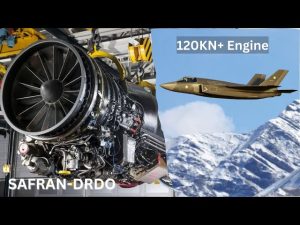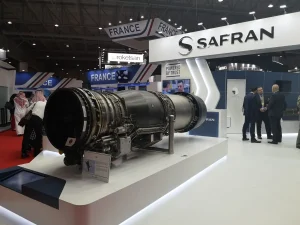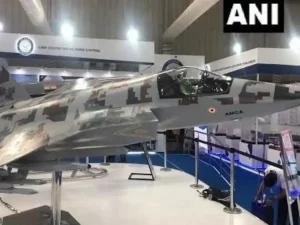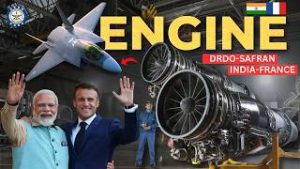New Delhi – India is poised to approve a groundbreaking joint venture between French aerospace giant Safran S.A and the Gas Turbine Research Establishment (GTRE), marking a pivotal moment in the nation’s defense manufacturing capabilities. This Safran DRDO jet engine partnership represents India’s most ambitious step toward achieving self-reliance in critical aerospace technology.
The collaboration comes in direct response to Prime Minister Narendra Modi’s call for indigenous development of jet engines during his Independence Day speech from Red Fort, emphasizing the strategic importance of domestic engine manufacturing capabilities.
Advanced Engine Specifications and Development Timeline

The Safran DRDO jet engine project will focus on developing and producing 120 Kilo Newton engines specifically designed to power India’s twin-engine Advanced Medium Combat Aircraft (AMCA) fighter program. The ambitious development schedule spans 12 years, during which nine engine prototypes will be created and tested.
The engine specifications demonstrate impressive scalability, with initial development targeting 120 KN power output that will progressively increase to 140 KN capacity by the project’s completion. This power range positions the Safran DRDO jet engine as a formidable propulsion system capable of meeting India’s most demanding fighter aircraft requirements.
Defence Minister Rajnath Singh has publicly indicated India’s commitment to embarking on this critical engine development initiative, highlighting the project’s national strategic importance.
Complete Technology Transfer Under Indian IPR


A defining feature of the Safran DRDO jet engine collaboration is Safran’s commitment to transferring 100% of engine technology to DRDO under Indian Intellectual Property Rights. This comprehensive technology transfer includes the highly sophisticated crystal blade technology, representing one of the most advanced aspects of modern jet engine manufacturing.
Also Read: RBI Nariman Point Acquisition Secures Prime Mumbai Land for Rs. 3,472 Crore
Crystal blade technology involves constructing engine blades from single crystals using super-alloys, creating components that are exceptionally efficient, long-lasting, and capable of withstanding extreme heat and stress conditions. While DRDO possesses fundamental crystal technology capabilities, adapting this expertise for high-powered jet fighter engines presents unique engineering challenges that the Safran DRDO jet engine partnership will address.
Strategic Advantages Over Alternative Partnerships
The Safran DRDO jet engine collaboration offers significant strategic advantages compared to other potential partnerships. While the United States provides F-404 engines and offers GE-414 engine technology transfer, the American arrangement involves only approximately 70% technology transfer, limiting India’s technological independence.
India’s preference for French partnership stems from France’s consistent support during critical periods, including their decision not to impose sanctions following India’s Pokhran Shakti nuclear tests in 1998. France continued providing state-of-the-art INGPS systems for Indian missiles and spare parts for Mirage 2000 fighters, demonstrating reliable strategic partnership.
The Safran DRDO jet engine partnership eliminates concerns about conditional offers and potential strategic disruptions that have historically characterized some international defense collaborations.
Integration with AMCA and Multi-Role Combat Programs


The Safran DRDO jet engine will serve as the powerplant for India’s Advanced Medium Combat Aircraft, which will be developed and manufactured by Indian private sector companies. Major industrial groups including Tata, L&T, and Adani Defence are prepared to contribute to this national defense initiative.
The engine development directly supports India’s broader multi-role combat aircraft program, potentially influencing the production of 114 additional fighters planned for domestic manufacturing. With Safran’s 73 KN M-88 Snecma engines currently powering India’s 36 Rafale fighters, the Safran DRDO jet engine represents a natural technological progression.
Global Context and Strategic Implications


The Safran DRDO jet engine project positions India among an exclusive group of nations capable of indigenous jet engine production. Currently, only the United States, Russia, United Kingdom, and France possess comprehensive aircraft engine design, development, and production capabilities. Even China, despite significant investments, continues relying on Russian engines or reverse-engineered variants for frontline fighters.
India’s previous indigenous engine attempt, the Kaveri project by GTRE, failed to achieve operational status, making the Safran DRDO jet engine collaboration crucial for establishing credible domestic capabilities.
Naval Applications and Future Expansion
The Indian Navy will benefit significantly from the Safran DRDO jet engine development, receiving twin-engine deck-based fighters equipped with these advanced propulsion systems for aircraft carrier operations. The 120-140 KN power range makes these engines ideal for naval aviation requirements, supporting India’s expanding aircraft carrier strike force capabilities.
Long-Term Strategic Independence
The Safran DRDO jet engine partnership fundamentally transforms India’s strategic defense posture by eliminating dependence on third countries for critical fighter aircraft propulsion systems. This technological independence enables the Indian Air Force to maintain power projection capabilities without external constraints or supply chain vulnerabilities.
The collaboration represents more than technology acquisition; it establishes the foundation for India’s emergence as a significant player in global aerospace manufacturing and defense technology development.

